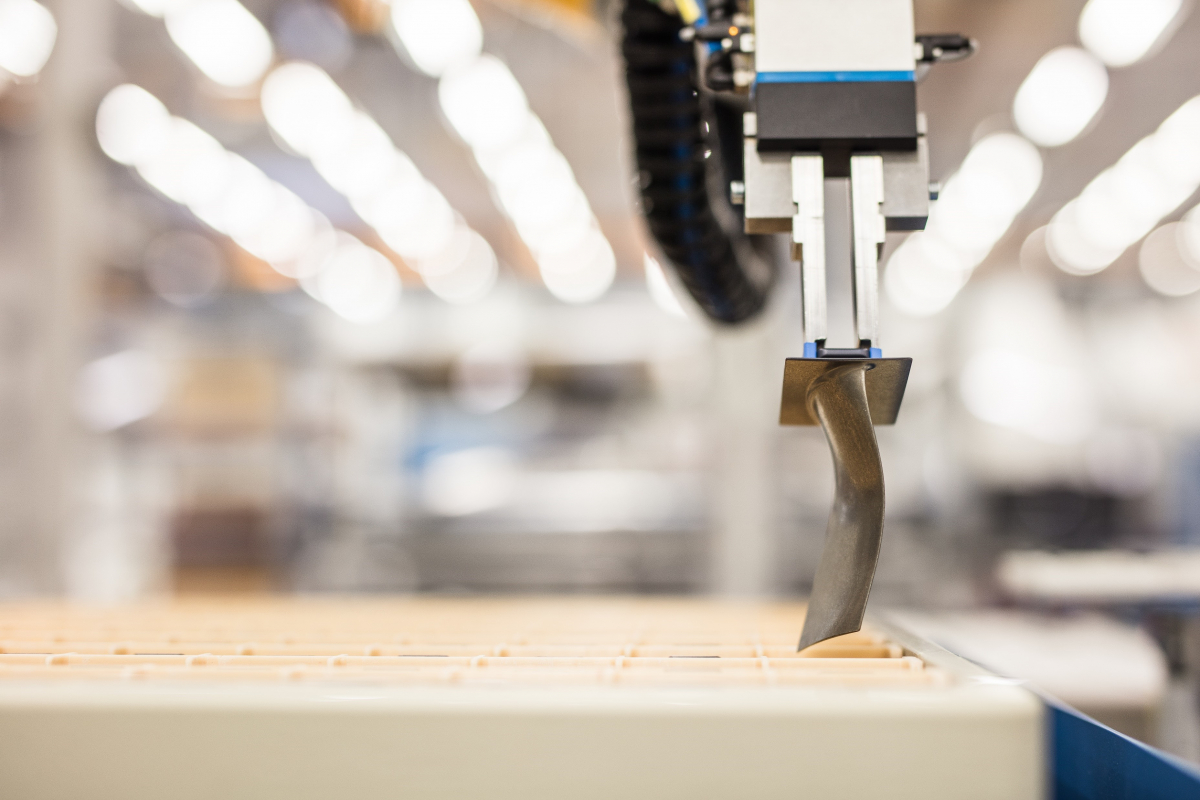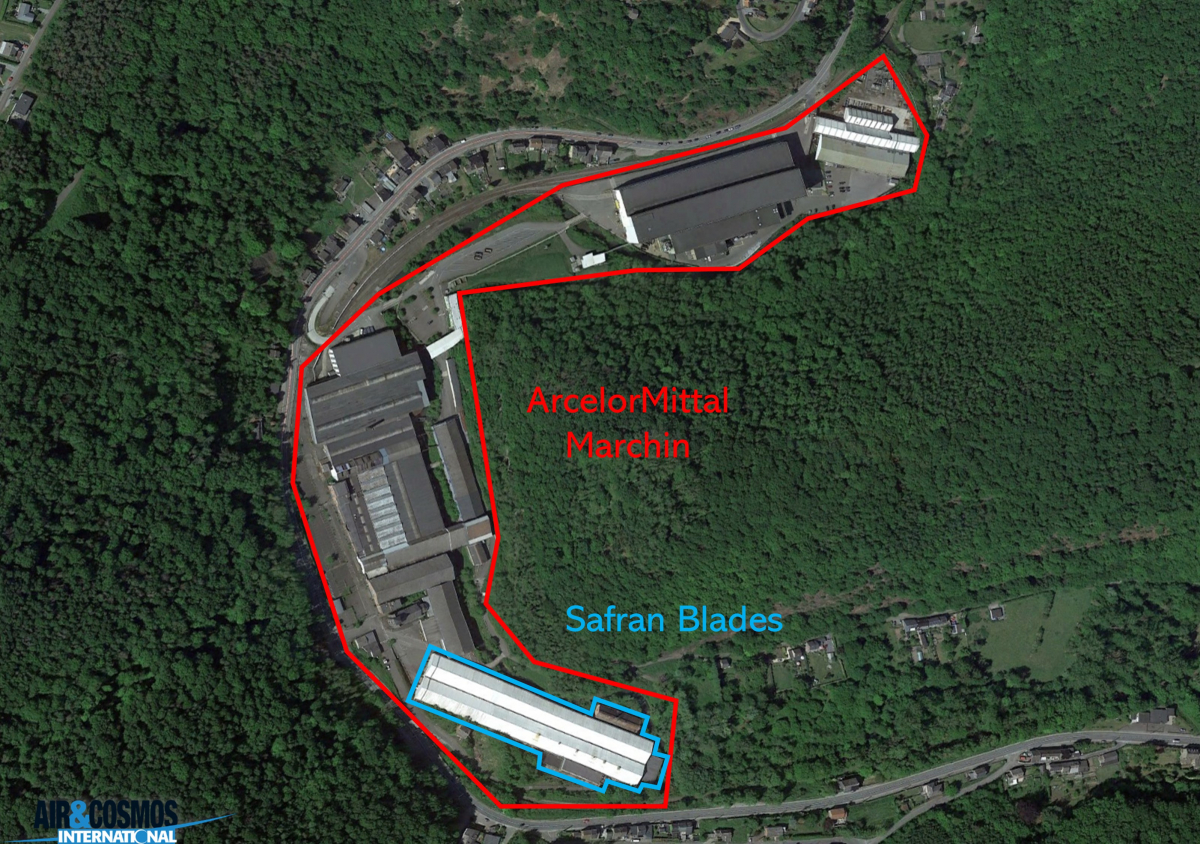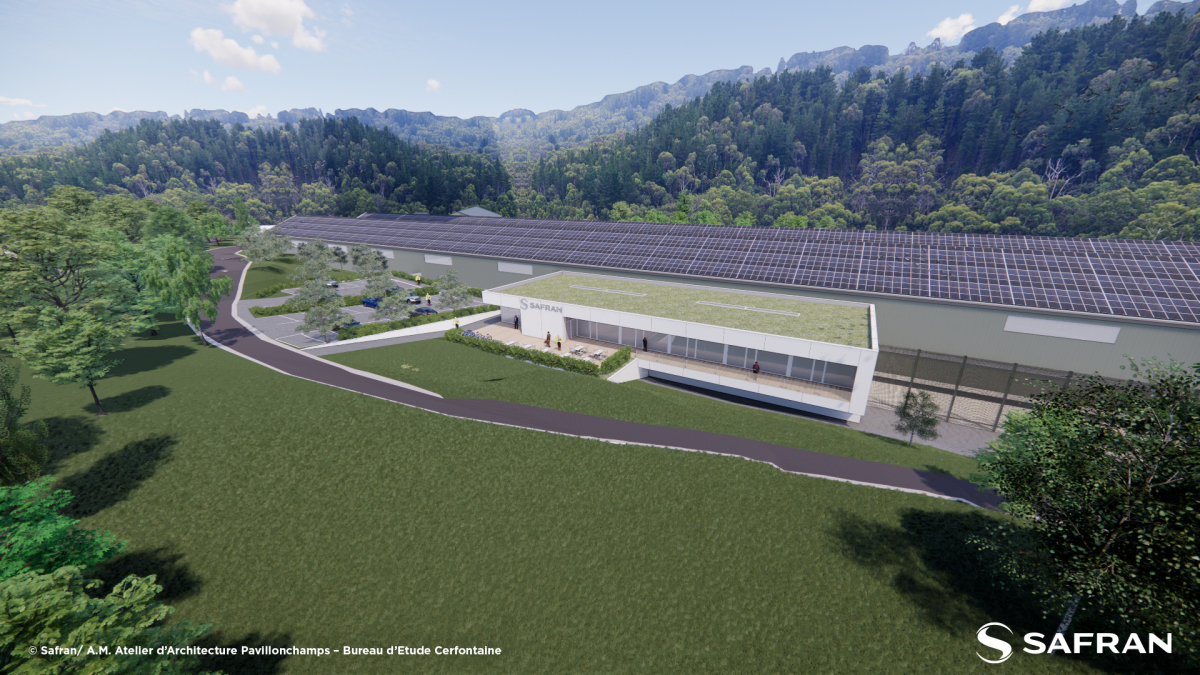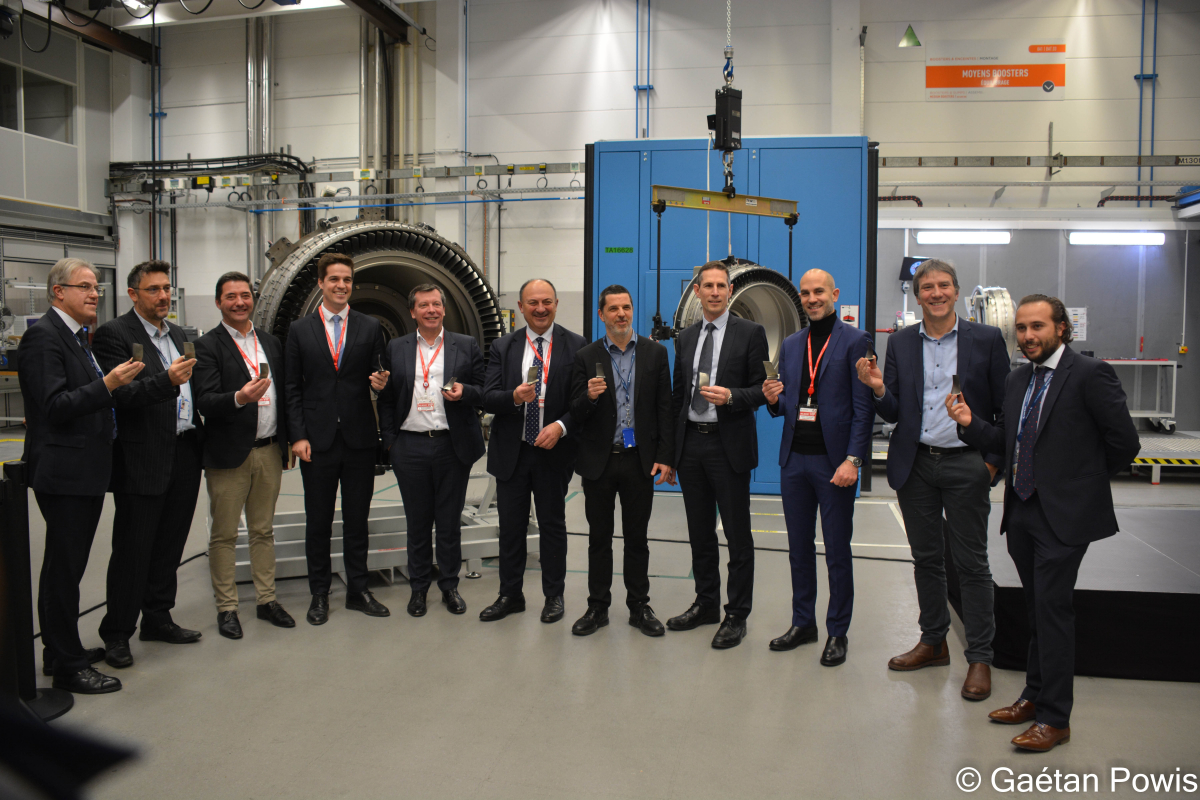Safran Aero Boosters has decided to set up a subsidiary, Safran Blades, with two Belgian public entities, to ensure its supply chain and maintain its independence in the design of compressors for future low-emission engines. This €50 million investment will create a high-tech plant. By 2026, the plant is expected to produce nearly 2,000 compressor blades per day for aero engines.
The future and the need to refocus
The aerospace world is also involved in reducing greenhouse gas emissions and is actively seeking the engines of tomorrow. There is obviously a race for the "first engine" but also for the most efficient engine. Safran Aero Boosters is taking part in this race with its low-pressure compressors, used in particular on the LEAP engines of CFM (a joint venture between Safran Aircraft Engines and General Electric). They power, for example, A320neo, Boeing 737 MAX and COMAC C919 airliners, or KC-135R tankers, RC-135 electronic reconnaissance aircraft, etc.
The development and production of these compressors is located at the Milmort plant (Liege, Belgium)... except for the blades! Indeed, these are produced in Canada, Israel, France or even China (50% of production) and are essential for the compressors. In fact, depending on the model, between 500 and 600 blades are needed for each low-pressure compressor.
This implies two problems:
- The need to remain independent: the race for the lightest, most efficient engine, etc. requires the need to retain sovereignty over development but also over construction. This is quite impossible when production is divided between these four countries, with nearly half coming from China.
- This is a very long-distance logistics that we need to be able to manage but also a logistics dependent on geopolitical events. In the event of a crisis with China, a large part of compressor production could be shut down, and therefore, part of the aircraft of airlines using LEAP engines!"
About geopolitics, the blades are forged in titanium. This metal was imported from Russia, until the war in Ukraine. Indeed, with the embargo on Russia, Safran Aero Boosters turned to titanium suppliers in the United States.
This situation is about to change for the Safran group's Belgian subsidiary: on December 19, François Lepot, CEO of Safran Aero Boosters, announced at the Milmort plant the creation of a low-pressure compressor blade plant in Marchin (Liège, Belgium).
Safran Blades
This plant will be managed by a new subsidiary, called Safran Blades, with capital divided into three :
- Safran Aero Boosters, with 56% of the capital
- Société Régionale d'Investissement de Wallonie (SRIW), 22%
- Société Fédérale de Participations et d'Investissement (SFPIM), 22%
The plant will be future-oriented:
- Roof will be equipped with solar panels
- Hydraulic turbines
- Insulated buildings
- Machining 4.0
- ...


In addition, the ecological impact of the area is very limited because the plant will be located on the ArcelorMittal site in Marchin. This site has been largely abandoned by Arcelor (about 30 staff are still active in the HP5 building) and Safran Blades will take over the HP3, HP4 and 601 buildings and the adjacent land. This represents an area of approximately 10,000 square meters (1 hectare) and an investment of 50 million euros.




The blades will be transported by road, but the impact of this transport will be small locally: the mass of a blade is about 200 grams and a few centimeters in size. Therefore, only one rotation will be carried out per month and this, in a standard truck (smaller than a semi-trailer truck). The distance is also small with the site of Milmort because about thirty kilometers (as the crow flies) separate the two sites. This will also facilitate contacts between the research and development department and blade production. Lastly, this new plant will revitalize an area that has been abandoned by the steel industry, with, in particular, around 100 jobs at stake.
In technical terms, the first blades should come out in 2024, with full production of 2,000 blades per day in 2026.
Presence of representatives of public authorities
Representatives of public entities were also present:
- Willy Borsus, Vice President of the Walloon Region, who notably insisted on the aerospace capital within the Walloon Region, representing more than 7,000 jobs, but also on the role that Safran Aero Boosters plays in the aerospace world, both in production and development. The latter ended by quoting astronaut Neil Armstrong: "Pilots don't care about walking. What motivates them is to be able to fly."
- Thomas Dermine, Secretary of State for Recovery and Strategic Investments, in charge of Science Policy, focused mainly on the point of geopolitical independence on key sectors, which includes aeronautics. He also cited the future increase in productivity in Europe thanks to the vote of the CBAM in the European Parliament last week (equivalent to a carbon tax on imports outside the European Union) and which will increase a little more the efficiency of this new site.
These two entities are already present in the capital of some Belgian and Walloon aerospace companies, such as Sonaca for the Walloon Region and Sabca for the federal.
A word about Safran Aero Boosters
The adventure began in 1987, with the split of the FN engines from the FN Herstal weapons factory. The engines produced were the F100, dedicated solely to the F-16 fighter aircraft. The Snecma group took control of FN moteurs in 1989. In 2005, the merger between SNECMA and SAGEM gave birth to Safran. However, it was not until 2016 that all the group's subsidiaries were under a single logo.
Safran Aero Boosters is 67.2 percent owned by Safran, 31 percent by the Walloon Region and 1.8 percent by the Société Fédérale de Participations et d'Investissement. It specializes in four main activities:
- Low-pressure compressors (CFM engines)
- Test benches (more than 200 benches sold worldwide)
- Aerospace valves (Ariane rockets and including Ariane 5 and the future Ariane 6)
- Oil systems
This Safran subsidiary has a staff of 1,700 people, mostly in Belgium but also with two subsidiaries in the United States. Most of the world's airliners are equipped by this Belgian subsidiary of the Safran group.


I especially wanted to thank the teams of Safran Aero Boosters for the information received for the writing of this article.
Découvrez cet article sur Air&Cosmos

